How Zenyum tripled their market reach in one year with Primer

Quick look
Zenyum leverages payments to optimize on-the-ground localization and overall growth.
With the help of Primer’s infrastructure, it took only one year for Zenyum to triple its global reach from 3 to 9 markets.
Zenyum dramatically reduced costs and dev effort with Primer as its single, no-code payment infrastructure.
Connecting local BNPL providers like Atome made Zenyum’s products accessible to all.
Primer’s like a control panel for all your payment needs. Without it, things would be much more difficult.
Julian Artopé, Co-Founder & CEO of Zenyum

Ever heard of smile cosmetics? Thanks to innovative companies like Zenyum, gone are the days when you could only fix your smile by donning a mouth full of metal braces.
In 2018, Zenyum launched with the mission to improve oral care routines and make high-quality dental products more accessible to customers across Asia. Their products include anything from dental floss to electric toothbrushes, teeth whitening tools and discreet invisible braces, all co-developed with a team of experts in the field.
Today, the Singapore-based company sells across 9 Asian markets, including Malaysia, Japan, Vietnam, Indonesia, Thailand and Taiwan. Each market offers a plethora of local alternative payment options, like digital wallets, buy now, pay later (BNPL), bank transfers and more. While fully invested in offering payment methods their customers would love, as the business expanded, integrating new payment options and managing a fragmented payment stack became an increasingly unpalatable ordeal.
So, in 2021, one year ago, Zenyum went live on Primer to unify and grow its payment stack for accelerated market reach in Asia. In honor of Zenyum’s first anniversary, we met with Julian Artopé, Co-Founder and CEO, to hear his key take on the role Primer’s played in their business over the past year.
Localizing Zenyum across Asia through payments
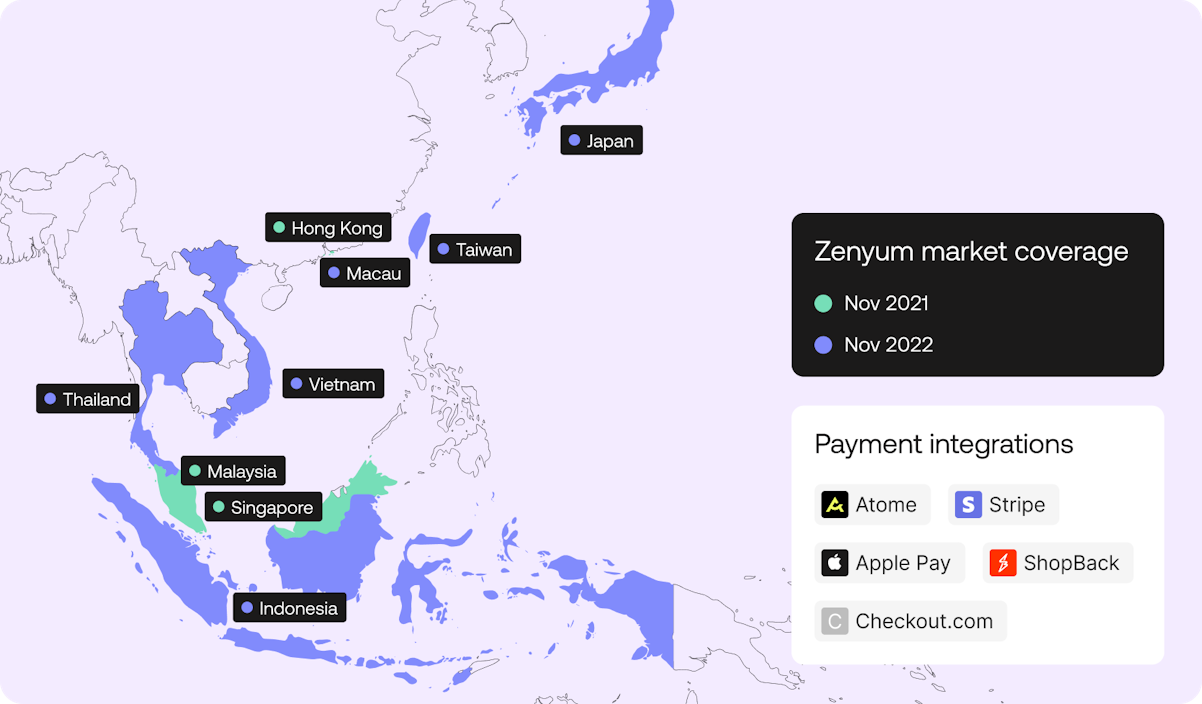
Zenyum was selling in Singapore, Malaysia and Hong Kong with regional payment integrations. To maximize their localization efforts, other than their Singapore headquarters, Zenyum set up satellite offices across the region, making it a point to hire staff on the ground to truly tap into local nuances and consumer behaviors.
With the APAC region’s digital economy boom on track to hitting a jawdropping $2 trillion USD in transactions by 2030, combined with online shoppers choosing businesses with more localized payment options, Zenyum realized that leveraging payments would help expand their total addressable market in a meaningful way.
When scoping out payment automation solutions, Zenyum noted that most payment orchestrators were focused on Europe and the Americas. Julian explained why this couldn’t possibly work for them:
Asia’s one of the biggest markets we wanted to amplify and grow stronger and deeper in. The Asian market is actually a complex ecosystem, because each individual region has its own local context and unique challenges to consider.
On the other hand, Primer clearly stood out to Zenyum as they were investing in partner Connections on a global basis, including APAC.
We wanted to find someone who’s willing to heavily invest in Asia, too. After comparing different platforms, Primer’s willingness to actively reach out and onboard more partners in Asia made it the perfect strategic partnership.
Julian mentioned how they insisted that the ideal payment automation platform would have to grow with the business. The ongoing introduction of more payment and commerce services on Primer reassured the Zenyum team that their stack would effortlessly scale over time to match their diverse clientele’s needs.
Tripling market reach with 1-click integrations
From the get-go, Zenyum set its sights on integrating as many local payment providers as possible.
We aligned with Primer to add at least one local payment method in every market. We’ve found that offering customers more payment options improves conversion rates, generating growth and revenue for Zenyum.
However, the team quickly discovered that onboarding and managing the individual payment methods in each market was daunting, not to mention costly.
The pain point for us was definitely the development time and effort required to maintain different integrations. We used to worry about keeping up with API updates whenever changes were needed. All of this required dev effort and costs, which would slow down other innovations we wanted to drive.
With the many players in payments right now, one country could have 3-4 different providers. Multiply this by 9 different markets, and you’ve got a huge task on your hands from a scaling perspective.
The team tried to figure out the best way to expand their stack.
When Primer came on board as our payment and commerce automation platform, we could integrate with different payment providers without doing the manual dev work ourselves. If we have 10 different payment methods that can be managed through a single source of integration, that makes total sense to us. One of the benefits Primer offers is dev time saved.
New payment methods set up in minutes
Julian told us that before Zenyum started using Primer, it took them much longer to get one payment method integrated—with many different backend setups, not including end-to-end testing their Payments Team had to do before go-live.
With a single API, we can now serve dozens of countries with payment options that get automatically connected. Primer enabling and testing the payment methods first is faster and smoother than having to review and figure out pages and pages of API documentation, then building and testing the integrations to ensure everything works.
Now, it takes minutes to set up Connections, and then we’re free to test them however we like. We can easily enable or disable payment methods in one click.
Today, the Zenyum team simply needs to pop into their Primer dashboard and click to enable new payment methods. They then use Workflows and Universal Checkout to test how the new payment option would look to customers.
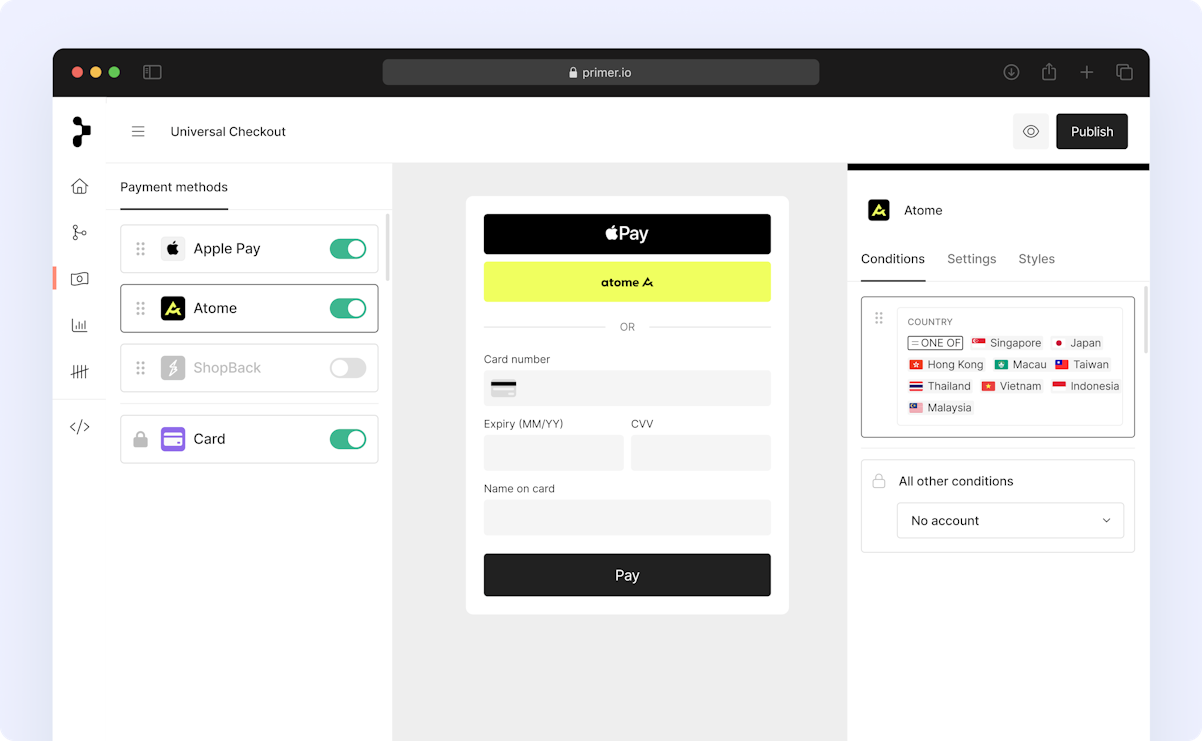
Julian pointed out another unique aspect of Primer: the option to ask for any payment or commerce service across the web, coupled with Primer’s guidance.
Primer adds more Connections all the time, but it’s a real two-way partnership. For example, we’d share our roadmap for market penetration and consult with the Primer team about the different payment partners that would make sense for us.
They also keep us regularly updated on the latest market developments so we can optimize our business strategy. This broader network effect is something we really look for in a partner.
Already having the payment partners in the Primer ecosystem helps kickstart discussions with them, offering Zenyum the flexibility of picking the lowest transactional cost they could incur from a payment.
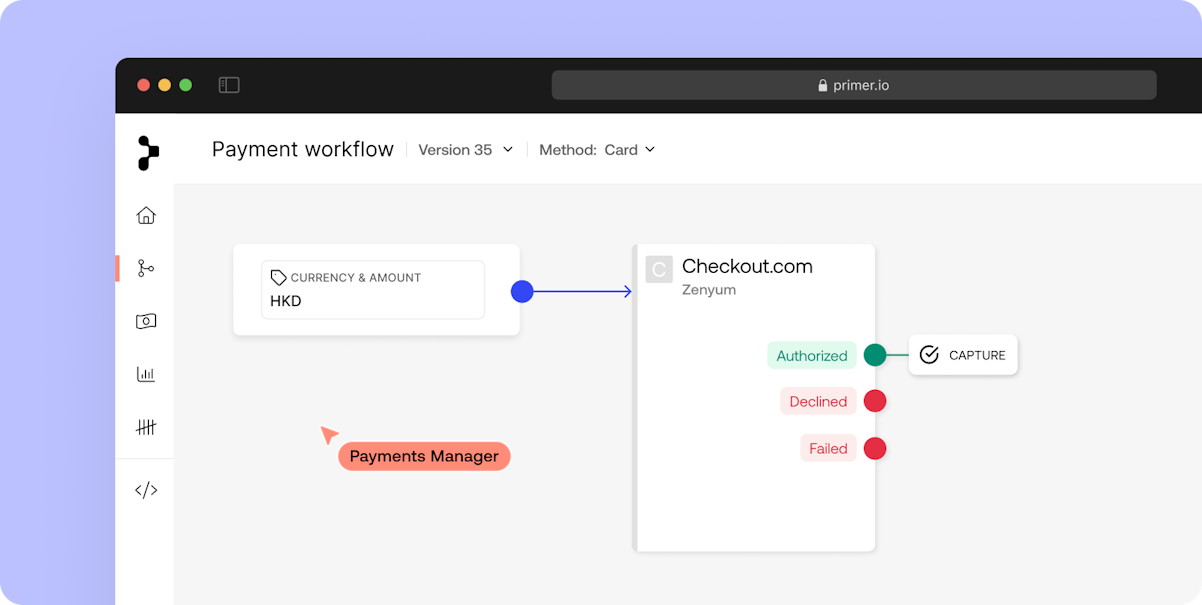
Empowering shoppers with flexible BNPL options
Zenyum’s core mission is designing products and experiences to help as many people as possible smile more. Sometimes, price can be a barrier, so they decided to offer buy now, pay later payment options at checkout. That’s when Zenyum decided to add Atome to their payment stack.
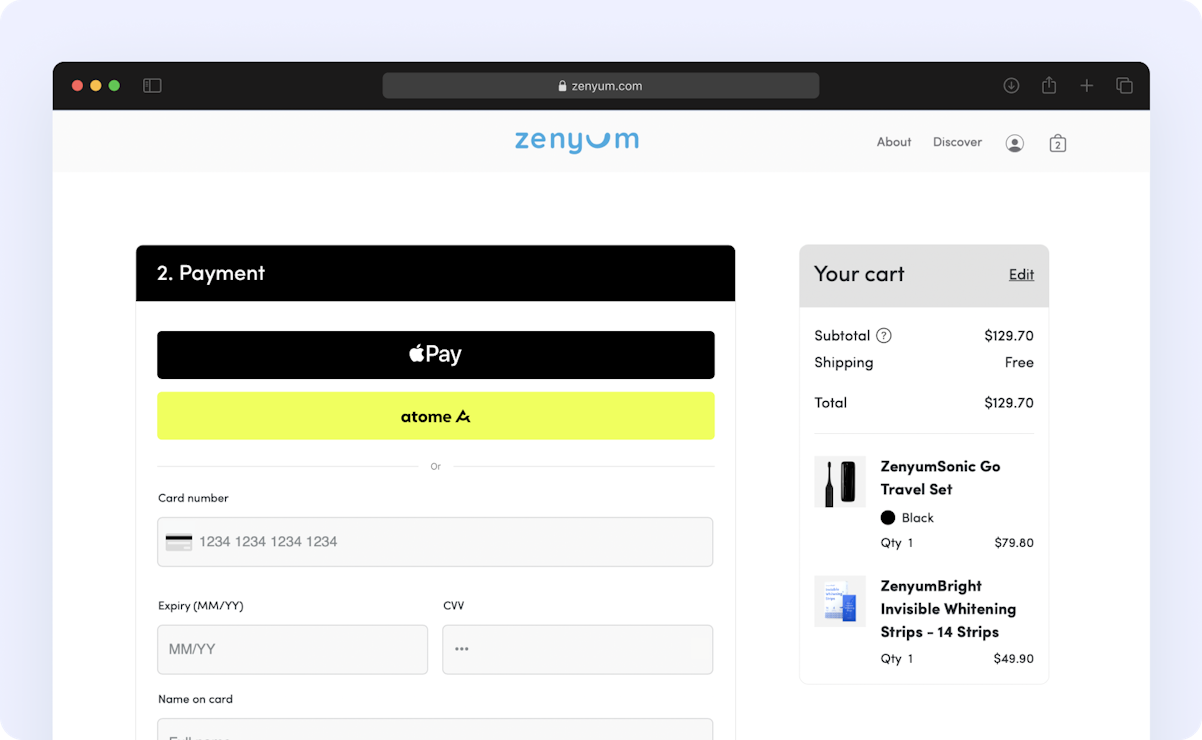
Atome is a leading buy now, pay later solution in Asia. The BNPL provider processes payments across 10 markets in APAC for 15,000+ retailers at multiple touchpoints: physical stores, on web and mobile. One advantage Julian mentioned is Atome’s strong brand visibility and online presence.
Atome is well-known and very popular in the region, so they already have that customer trust. Partnering with them saves us time, and reduces friction and cart abandonment at checkout.
Jeremy Wong, Head of Strategic Partnerships at Atome, agreed with Julian:
We have great synergy between Zenyum and Atome's customer base of young professionals, millennials and Gen Zs wanting to feel confident and look their best.
Zenyum can now provide smile cosmetic products at an affordable price. It’s a perfect fit as Atome offers payment transparency, flexibility and choice. We allow consumers to spread payments over time, while managing their monthly budget. This not only increases conversion at checkout, but also the average basket size.
Similar to other BNPL providers, Atome offers a 3-month interest-free payment plan, but they stand out by also offering payments equally split over 6 months, or even 12 months in some markets. This can make a huge difference at checkout, encouraging shoppers to click that Pay button faster.
In fact, Zenyum’s payment volume increased after adding Atome to their payment stack via Primer. Julian discussed the partnership:
Our roadmaps aligned quite nicely, and with the current post-pandemic recession hitting in waves, adding a BNPL solution makes complete sense and helps make everything more affordable for our customers.
Jeremy elaborated on why it’s beneficial for merchants to integrate Atome via Primer:
Primer unifies the entire payment stack, so merchants only need to integrate Primer, nothing else. It’s just a matter of one click to add Atome after that.
Plus, the Primer team is quick, responsive and super-focused on delivering better outcomes for everyone involved: merchants, partners and customers. This is aligned with Atome's vision of providing the best possible experience for our customers.
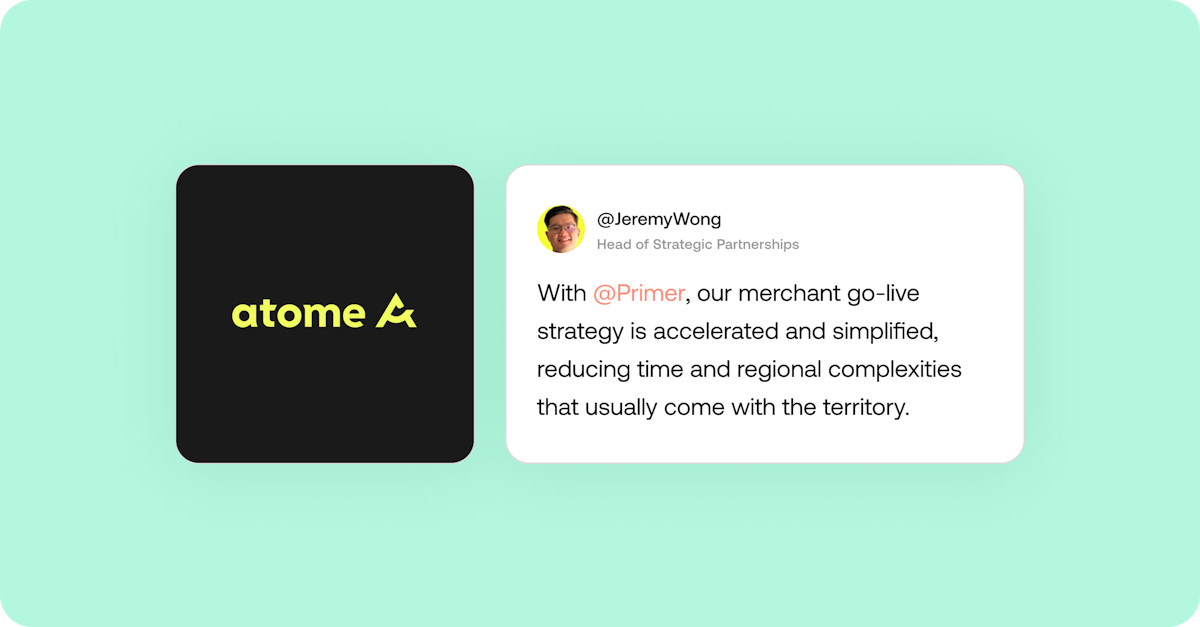
What’s next?
Looking ahead, Zenyum plans to enhance their localization to more markets by studying regional consumer habits, then adding the best local payment methods to their stack.
As we dive deeper into the markets, this need to make payment methods readily available to anyone will increase. We don’t want to be a Singaporean company in Taiwan. We want to make decisions like a Taiwanese company in Taiwan, so being able to fully localize how customers pay in each of these markets is key to us.
Primer’s singular ability to integrate any third-party payment or commerce service, such as fraud prevention, loyalty programs and niche-specific payment providers, all with no code—serves Zenyum well. Both teams are currently scoping an accelerated payment and commerce roadmap that will fortify Zenyum’s hold on its current and future regions.
With the power of Workflows, it’s very easy to make our payments safe, flexible and accessible to all our customers, and see how we can also optimize our own operational efficiency. As we keep exploring this, we can see how Primer will only make our lives easier!
Want to leverage payments for growth like Zenyum did? Get in touch with us.